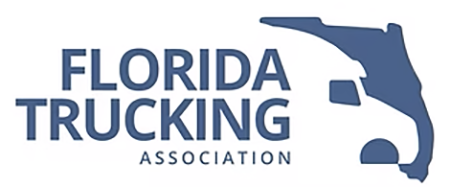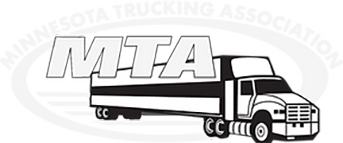Careers in Trucking
Nothing Without Trucking:
America Moves By Truck
At this very moment, and around the clock, coast-to-coast, trucks are on the road hauling the essentials—everything the Nation needs such as food, books, clothing, electronics, automobiles and medical supplies.
More than 3.5 million professional truck drivers, operating more than 38.9 million trucks of all classes keep America moving forward. There are 8.4 million people employed in all facets of the trucking industry.
Truck drivers take great pride in delivering goods where they need to be safely and on time to ensure that the quality of life that Americans enjoy remains high.
These professionals are the reason that products reach store shelves and front doors, medications reach patients, and raw materials reach manufacturers. In the wake of natural disasters, truck drivers are among the first on the scene, delivering humanitarian relief.
Careers Are Available in Trucking
For those who love to drive and love seeing other parts of the country, this profession is for you. Truck driving is one of the top five most common jobs in 23 states. The median for-hire truckload driver pay reached $76,420 in 2023, a 10% jump from 2021.
There is robust demand for safe, qualified drivers. If you received your commercial driver’s license (CDL) today, it’s almost certain there will be a job available to you tomorrow.
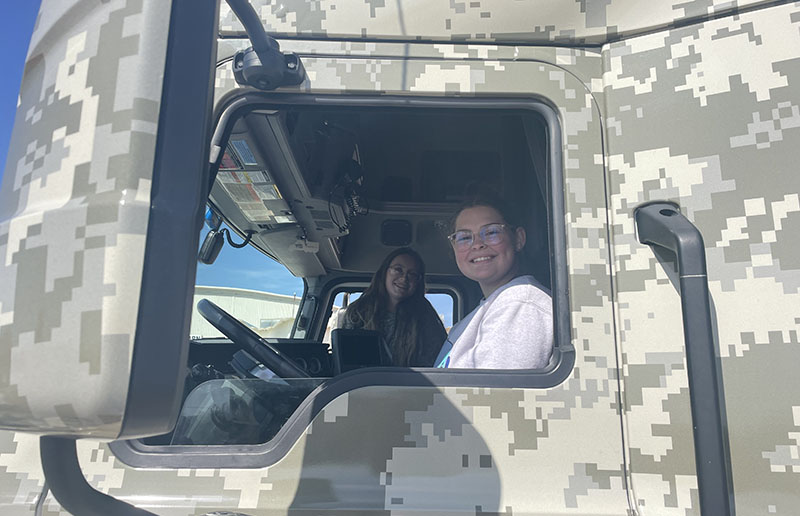
 The industry also needs heavy-duty service technicians. This is a highly skilled, well-compensated occupation that is critical to keeping trucks—and our economy—rolling.
The industry also needs heavy-duty service technicians. This is a highly skilled, well-compensated occupation that is critical to keeping trucks—and our economy—rolling.
Freight Volume
The journey for nearly every product begins and ends on the back of a truck. Trucks move over 72 percent of all freight by tonnage nationwide, and more than 80 percent of communities depend solely on trucks to receive their goods.
Trucking also plays an important role in the exchange of goods between the United States and two of our largest trading partners, Canada and Mexico, supporting millions of American jobs. Continuing to have free trade between our countries will help our industry well into the future.
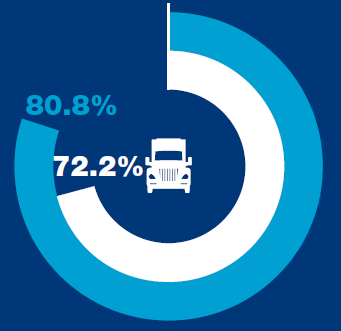
Trucks Move the Economy

$436 billion
in goods between
the U.S. and
Canada
$561 billion
in goods between
the U.S. and
Mexico
Professional Truck Drivers & Types of Driving Jobs
Most individual long haul drivers average from 100,000 miles to 110,000 miles a year, with an average daily run of about 500 miles a day. Regional and city drivers average about 48,000 miles behind the wheel annually. You do not need to buy or lease your own truck for most driver jobs. The vehicle is provided for you and usually maintained by the trucking company.
U.S. professional truck drivers are both men and women; vary in age, race, and educational background; and live all over the United States.
There are different types of truck drivers:
Over-the-Road / Long-Haul Drivers operate heavy trucks and drive for long periods of time, either interstate (between states) or intrastate (within one state). Some long-haul drivers travel a few hundred miles and return the same day; others are away from home overnight, or for several days or weeks at a time. Some drivers work in teams, which can include spouse teams.
Pick-up and Delivery (P&D) / Local Drivers operate light, medium or heavy trucks and work in route-sales or pick-up-and-delivery operations. These drivers have more contact with customers than over the road drivers and usually make more stops each day. Those P&D drivers often need sales skills in addition to driving skills.
Specialized Trucking involves specialized trucks that handle unusual, oversized or sensitive loads. Drivers cover local and long-distance routes, and need extra training to operate their equipment. Examples of specialized trucking include auto carriers, dry bulk carriers, (permitted) oversized and overweight loads, or double and triple trailers. Other permits may be required.
Hazardous Materials Drivers need to know about the content of the loads they are hauling, how to handle the loads safely and what to do in an emergency. Drivers who transport hazardous materials must also take a special test when applying for the CDL that certifies them as a hazardous materials driver. Examples of hazardous materials drivers include tank truck, over the road or P&D drivers carrying hazardous materials. Other permits and training may be required.
An Owner-Operator or Independent Driver owns his or her equipment, anything from a straight truck to a flat-bed tractor-trailer, and hauls freight on a contractual basis. Husband-and-wife owner-operator teams are very common, especially in the household goods moving industry. It is possible to make good living as an owner-operator, but like many businesses, the competition is tight and there are many overhead expenses involved – equipment purchases, maintenance, fuel and insurance, to name just a few. Most owner-operators begin their careers as salaried drivers with a motor carrier before starting their own business.
NOTE: Rates of pay and potential earnings vary considerably within the industry. Most city pick-up-and-delivery drivers are paid by the hour. In long-haul operations, drivers are usually paid a specified rate per mile, or, in some cases, a percentage of the revenue the motor carrier receives for the load hauled.

DO YOU HAVE
WHAT IT TAKES
To qualify for a truck driving job with a company operating in interstate commerce, a driver must meet certain background and physical qualifications prescribed by the Federal Motor Carrier Safety Regulations. Each applicant must pass a knowledge and skills test. In addition to federal regulations, most companies have other rules and standards which a driver must follow. Some basic requirements:
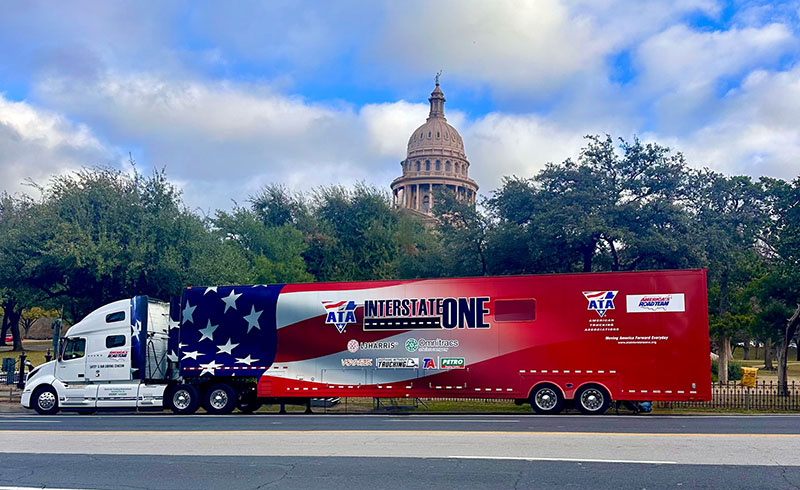
AGE: While many states allow those 18 and older to drive trucks within state borders, federal regulations require drivers operating across state lines to be at least 21 years of age. The American Trucking Associations is actively working with Congress to change these rules and allow 18-years-olds, who have gone through a specific training program, to driver interstate. Fleets are willing to bring 18 year olds on through apprenticeship programs and to work on the dock.
LICENSE: Every truck driver must have a valid commercial driver’s license (CDL) issued by his/her state of domicile. A commercial driver can hold a license from only one state. Specific endorsements (i.e.: hazardous materials, tank, double or triple trailer) may be required depending upon the company’s needs and the type of equipment you will be operating. Go to www.fmcsa.dot.gov for more information.
PHYSICAL CONDITION: The U.S. Department of Transportation requires that drivers are medically certified as physically qualified to operate a commercial motor vehicle. Driver certification is up to two years, based on health history. A driver must not have suffered any loss of limb, nor any physical impairment or medical condition likely to interfere with safe driving unless granted a skill performance evaluation certificate or medical exemption.
VISION: A driver must have at least 20/40 vision in each eye, with or without corrective lenses, and have a 70-degree field of vision in each eye. Drivers must be able to recognize the colors of traffic signals and devices.
HEARING: A driver must be capable of perceiving a forced whisper in the better ear at not less than five feet, with or without the use of a hearing aid.
EDUCATION: All drivers must be able to read and speak English well enough to understand traffic signs, prepare required reports, and speak with law enforcement authorities and the public. (Note: Some companies may have additional educational requirements.)
SAFETY: The U.S. Department of Transportation sets safety rules for interstate truck drivers (vehicle inspections, hours of service, etc.), and drivers must learn these rules and comply with them. Most states have adopted similar rules for intrastate drivers.
SUBSTANCE ABUSE: Strict regulations forbid the use of alcohol or drugs prior to or while operating commercial vehicles. Drivers are subject to drug and alcohol testing by their employers and by law enforcement officials under four different circumstances: pre-employment, post-accident, reasonable suspicion and random testing. A driver’s blood alcohol content (BAC) must be no greater than 0.04 percent. Additionally, a driver must have no current clinical diagnosis of alcoholism, and must not use any illegal drugs.
CRIMINAL / DRIVING RECORD: A driver must not have a revoked, suspended, or canceled driver’s license, nor any convictions that involve serious motor vehicle driving offenses or, hit-and-run driving which resulted in injury or death.
GETTING HIRED AND ADVANCING
Most trucking companies will want drivers with commercial driving experience, most likely anywhere from two to five years of safe driving experience. However, some companies operate their own driver training schools and readily employ their graduates as new truck drivers. As a new trucking company driver you will also be provided on-the-job, advanced training to help you feel comfortable with the company’s equipment and operations before venturing out on the open road.
Drivers who succeed are usually those who have excellent driving records, participate in company and industry safety meetings and receive advanced training. Truck drivers can, and often do, advance to jobs in sales, safety or operations within their company. Other drivers become driver trainers or advance to handle specialized equipment.
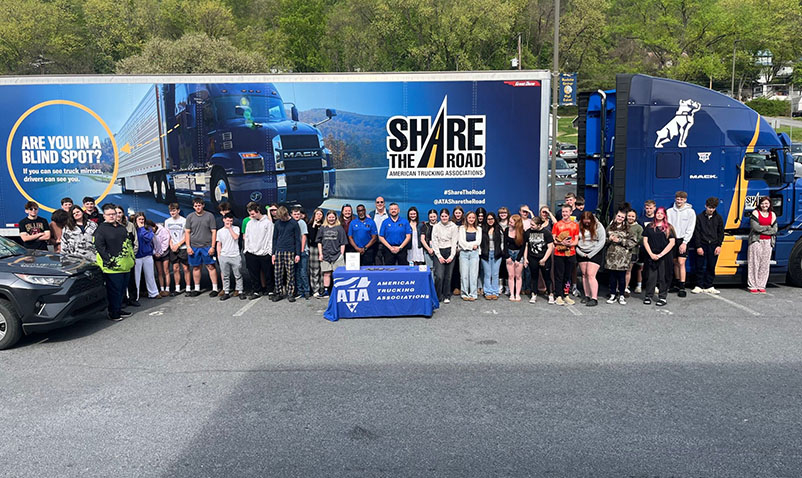
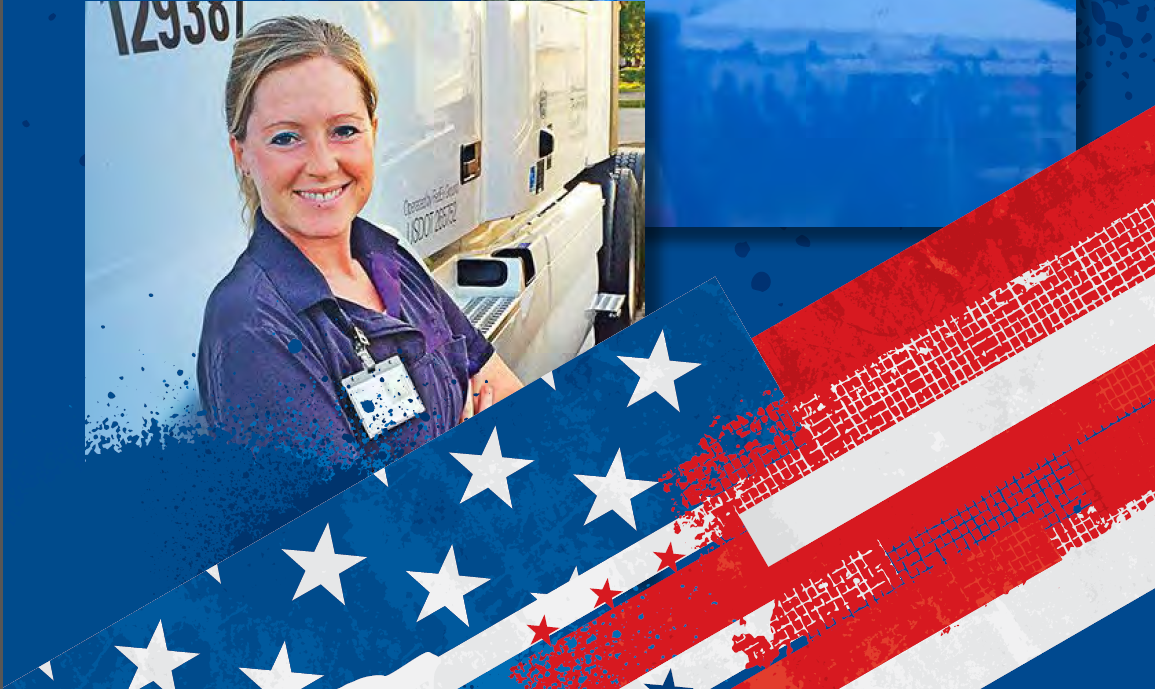
Education Options
How to Choose a Truck Driving Training School
A good way to get started on a career in driving is by enrolling in a truck driver training program. Driver training schools can be found in most parts of the country, often in community colleges, vocational-technical schools, and through private, proprietary schools. Many trucking companies also operate their own training facilities. Visit the Commercial Vehicle Training Alliance, the National Association of Publicly Funded Truck Driving Schools or the Professional Truck Driver Institute websites and learn more about driver training schools. Those organizations represent some of the most reputable schools.
1 To find the program that is right for you, visit as many schools either in person or on-line as you can and consider the following guidelines:
- The school should have adequate facilities for in-class instruction, comparable to the average public school classroom. Classroom instruction should include lectures and training videos; and it should adequately prepare you to pass the commercial drivers license (CDL) exam. Consider the teacher-student ratio and what courses are offered. Be sure their class curriculum is outlined in detail. Contact your state division of motor vehicles for a copy of the CDL study manual.
- The school should provide a variety of well-maintained trucks, tractors and semi-trailers to train you for local, long-haul and city pick-up-and-delivery driving. The school should have an off-street area for initial, behind-the-wheel instruction in vehicle handling and maneuvering.
- Instructors should have a solid background in truck driver training, combining education and actual driving experience. Be wary of schools that claim to be endorsed by the federal government,
- trucking associations, or specific truck fleets, or that claim to train you in less than two weeks. Contact organizations directly to verify a school’s endorsement claims.
- Check with the local board of education or business licensing agency to see which certificates or licenses the school is required to have. Then, check to see that the licenses are displayed and are valid. (Telephone numbers for these agencies usually can be found in the state and local government section of the telephone directory or on the web.)
- One of the best ways to verify the reputation of a training school is to ask local trucking companies if they hire graduates from that school. Talk with recent graduates about the content and quality of training received, and ask if they have been successful in finding a truck driving job. Ask the training school how many student graduates receive their CDL.
2 Once you have decided on the program that is right for you, pay close attention to the following details before signing the contract:
- Read and understand the contract, and know exactly what your obligations are. Verify the tuition and other costs and terms governing refund or forfeiture of the down payment, should you fail to complete the program. If necessary, make arrangements (and be sure you clearly understand the terms) for financing the remainder of the tuition.
- If the school is far from your home, check into the availability of room and board at the school. Be sure to investigate the adequacy and costs of those facilities. If you have dependents, be sure you have made arrangements to support them while you complete training.
- Research the availability of truck driving jobs where you live and realize that you may need to relocate in order to find a driving job.
Safety On the Road
The most important factor in determining if trucking is the career for you is whether you are willing to make a commitment to be safe and professional.
The American Trucking Associations (ATA) has led the campaign for strong safety laws that affect every truck driver on the nation’s highways. ATA’s overall safety agenda includes greater education on sharing the road with large trucks, the adoption of primary safety belt laws in all states, the enactment of distracted driving laws, and increased traffic enforcement for all vehicles that operate unsafely around large trucks.
As a means of further improving highway safety, ATA was instrumental in getting the commercial drivers license (CDL) program established. The goal of the program is to ensure that drivers of large trucks and buses are qualified to operate these vehicles and, to remove unsafe and unqualified drivers from the highways. State licensing agencies administer the program which requires them to adopt national testing standards to license a CDL driver. Driving records for all CDL holders are retained in a centralized database to prevent drivers from obtaining multiple licenses or hiding violations and driving status. ATA was also involved in establishing mandatory drug and alcohol testing requirements, increasing roadside safety checks and banning radar detectors from all commercial trucks operating in interstate commerce.




